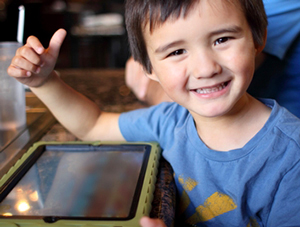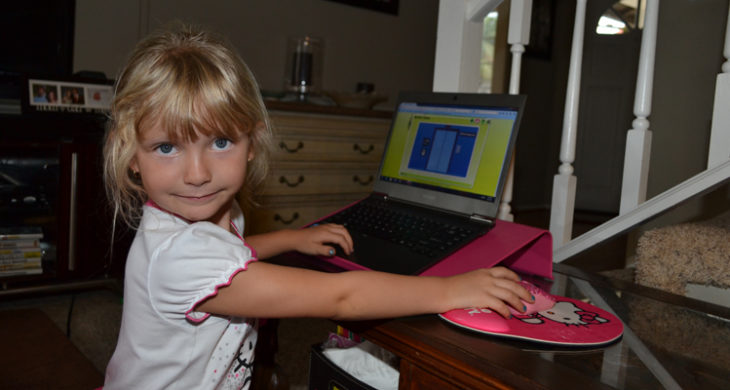“What a good boy!” How many times have you heard a similar exclamation about a child? And have you ever stopped to wonder what such a statement actually means?!
In my journey as both a psychologist and a parent, it has occurred to me countless times how challenging our collective focus on “behavior” has made the growing up of children. We assign labels ad nauseam of “good” and “bad” to both children AND their parents based on a child’s behavior. The child who can sit through a wedding ceremony without incident is clearly a “good” child with “good” parents, and the child who cannot? Not so much on both counts. Obviously, they are a “bad” child with parents who don’t really have their game on. Ugh.
Who decided that the good–bad continuum was appropriate and should be used to judge children and their parents? And more so, who decided that good or bad should be a way to look at child development?! There is perhaps no greater harm done to children and to their parents than the shame, reactivity, and panic brought about by the judgmental good–bad behavior continuum.
The core of the issue here is that we look at behavior as a problem rather than a natural, anticipated, and in fact necessary part of a child’s development. It is in the ups and downs that children have an opportunity to grow. When a child experiences what it is to be undone, frustrated, impulsive, or reactive, and is then responded to with nurturing care and directives, the child’s brain grows further capacity for self-regulation, while the child’s soul comes to understand empathy and love. And so, for parents to succumb to the good–bad continuum, turning their child into a “good” child and their reputation as parents to that of “good parents,” would be to sell out on their child’s needs.
Let us consider a few examples to bring to life how problematic the good-bad behavior continuum for judging children and parents really is.
The sensitive child
Think about a child born wired-up to be temperamentally sensitive. Most things about the world are offensive to such a child and completely deplete that child’s coping reserves. Having to manage normal day-to-day situations for such a child requires that child to burn up huge amounts of coping energy. The likelihood that such a child is going to be unable to handle even a really typical situation in a “good” way is pretty strong. Is this a “bad” child? Are his parents “bad” parents?
The stressed child
In another example, think about a child whose family is very stressed. They work long hours to be certain the bills are paid as they reach for a better something. Of course, the family system absorbs some of that stress. Perhaps it is no wonder then that one of their children has become the source of a few phone calls home from school for acting out on the playground. Are you going to call those parents “bad”? If you really understood this child, would you dare suggest she is “bad”?
The sunshine-and-roses child
In a third example, think about a child whose family has had a difficult run. The parents have separated. Mom and dad have both individually fallen to pieces in the heartache of that. The child is looking around and sees that the foundation of what he needs in order to be okay is crumbling. And so, he steps up with a “sunshine and roses” façade. This is a different kind of behavior that would often be judged as “good” but is it really desirable? No matter what happens, he won’t make waves, won’t come across as needy, won’t have his wants be known. And so his needs will go unmet; his wants unknown. Is this a “good” child? Are these “bad” parents?
Behavior is purposeful
Our obsession with the good–bad continuum when it comes to children and parenting is based on the influence of an ignorantly informed pop-culture rather than the science of child development.
When we look into that science, we see that all behavior is purposeful and is born of dysregulation within a child’s brain (Tarullo et al., 2009; Gunnar & Donzella, 2002). We also see that the growing child is supposed to lose control. Their brains are not yet developed enough to allow them to manage their impulses. Rather, they depend on nurturing care to see brain growth proceed in a manner that ultimately results in the capacity for self-regulation (Gunnar & Quevedo, 2007).
Whether or not a child is “successful” behaviorally in a given situation is dependent on 27 different reasons, not a single one of which has to do with “good” or “bad.” And every single one of which is born of the genuine effort of a little soul to reach forward and grow even when the going has become tough.
A child’s needs matter most
The question we must ask ourselves is this: Are you really prepared to sell out on the child’s needs in the name of the good–bad continuum? The good–bad continuum is founded in antiquated biases and erroneously held up as justifiable by misinformed ideas about who children are and what children need. Adults everywhere unite! Let’s get over our focus on “good” behavior already, and instead, let’s yearn to embrace healthy development. Let’s champion the needs of the child and come alongside the parent striving to do the same. We know better. We can do better. You’ve got this.
,










